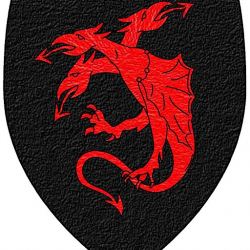Winter is coming, officially December 21st but for a loyal cadre winter returns in April when the final season of Game of Thrones airs. A new report in Injury Epidemiology is a somewhat tongue-in-cheek study of the death and destruction of the prior seven seasons. Let me summarize their findings.
Researchers made use of primary data sources, the boxed set of Season 1 to 7 DVDs cross-linking their information with both the Game of Thrones wiki and the Internet Movie Database (IMDb). The primary outcome was the time of death, in hours, from the introduction of the character until their demise. Sociodemographic information was inferred from the primary data source, and all deaths were assigned appropriate International Statistical Classification of Disease (ICD-10) codes, the same system used in clinical research. A surrogate measure of prominence of the individual was calculated.
The data set consisted of 330 characters. 71.8% male, 31.5% highborn (also characterized as silk collar workers), 62.4% were “boiled leather” collar workers, who we might term blue-collar employees. The study itself was limited in considering only “important” characters, and there were cases of missing data, although whether they were “impugned” in the final analysis is unclear.
The Bloody Details
- 56.4% died, natural deaths accounted for approximately 1%
- 73.7% died of injuries
- Primarily open wounds to the neck (14%), chest (11.3%), decapitation (7%) and multiple sites (13.4%)
- Burnings 11.8%
- Poisoning 4.8%
- Deaths were most frequently due to assault (63%), “operations of war” [2] (24.4%), and legal executions (5.4%)
- Most deaths occur at home (30.4%) with about 40% indoors and most often during the day (52.7%)
- Survival ranged from 11 seconds to slightly more than 57 hours; median survival was almost 29 hours.
 As with most studies, the interesting “dirt” is to be found in their secondary analysis. I have reprinted their survival curves on the left. Median survival was reduced for males and those of low born status – mirroring to some degree the toll of violence still present in our society.
As with most studies, the interesting “dirt” is to be found in their secondary analysis. I have reprinted their survival curves on the left. Median survival was reduced for males and those of low born status – mirroring to some degree the toll of violence still present in our society.
In keeping with the series, both prominence and loyalty were found to be independent factors influencing survival. In short, high prominence resulted in an increased hazard ratio (likelihood of dying) of 2.5, moderate prominence resulted in a hazard ratio of 6.5 – so much for the safety of middle management. Switching allegiance was associated with a significantly reduced hazard ratio, 0.35 conferring a bit of protection.
It is of little surprise that most of the deaths were from sharp objects given the implements available. The reduction in poisoning may be due to their less dramatic nature, certainly as compared to the burnings or the Red Wedding.
Of course, the real thrust of the article was to point out how violent deaths have declined throughout history; World Health Organization data suggests that from 40 deaths per 100,000 in the Middle Ages, deaths in Europe have fallen to 3 per 100,000 today. The authors suggest that the development of nation-states, with the development of infrastructure and trade, led in part, to violence’s decline. As for Game of Thrones, nation-states are evident, but infrastructure and commerce seem unevenly distributed. Moreover, the legitimacy of ruling power, the basis of the story, is unclear; meaning that the “rule of law” is subject to changes based on whim as well as shifting power.
[1] Prominence was based on the number of episodes an individual appeared in divided by total episodes between their introduction and death.
[2] This would include fires, conflagrations and other hot substances as well as the discharge of firearms and other forms of conventional warfare.
Source: “Death is Certain, the time is Not”: Mortality and Survival in Game of Thrones Injury Epidemiology DOI: 10.1186/s40621-018-0174-7

